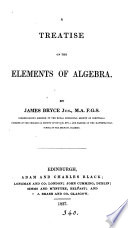 | James Bryce - Algebra - 1837 - 322 pages
...subtract its cube from the given quantity; 3* take the quotient of the first term of the remainder by three times the square of the part of the root already found, and set it down as the next term of the root: then, to the treble of the square of the first term of... | |
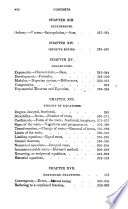 | Stephen Chase - Algebra - 1849 - 348 pages
...43200+1800+25 = 45025, 2d complete divisor. 225125~ NoTES. (1.) The terms of the power not being distinct, three times the square of the part of the root already found is only a trial er approximate (§ 174. N. 2) divisor, and the correctness of the next figure of the... | |
 | Joseph Ray - Algebra - 1852 - 408 pages
...polynomial with reference to a certain letter. Extract the cube root of the first term, this will give the first term of the root, and subtract its cube from the given polynomial. 2nd. Take three times the square of the first term of the root, and call it a trial divisor for finding... | |
 | James William M'Gauley - 1854 - 284 pages
...the first term will be the first term of the root: subtract its cube from the given quantity. Divide three times the square of the part of the root already found, into the remainder : — the quotient will be the second term of the root. Subtract three times the... | |
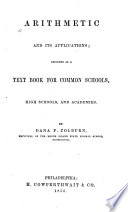 | Dana Pond Colburn - Arithmetic - 1855 - 396 pages
...period, and to the remainder bring down the next period, calling the result a dividend. Fourth. Find three times the square of the part of the root already found, and make it a trial divisor. Fifth. See how many times the trial divisor is contained in the dividend,... | |
 | Dana Pond Colburn - Arithmetic - 1856 - 392 pages
...period, and to the remainder bring down the next period, calling the result a dividend. Fourth. Find three times the square of the part of the root already found, and make it a trial divisor. Fifth. See how many times the trial divisor is contained in the dividend,... | |
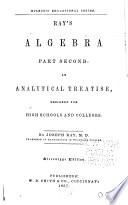 | Joseph Ray - Algebra - 1857 - 408 pages
...polynomial with reference to a certain letter. Extract the cube root of the f'rst term, this will give the first term of the root, and subtract its cube from the given polynomial. 2nd. Tale three times the square of the first term of the root, and call it a trial divisor for finding... | |
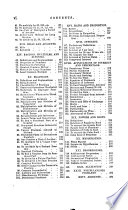 | Dana Pond Colburn - 1858 - 288 pages
...left-hand period, and to the remainder bring down the next period, calling the result a dividend. 4th. Find three times the square of the part of the root already found, and make it a TRIAL DIVISOR. 5th. See how many times the trial divisor is contained in the dividend,... | |
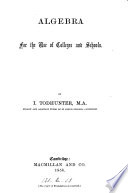 | Isaac Todhunter - Algebra - 1858 - 530 pages
...column, and add the last three lines in this column ; thus we obtain 12ж4 — 36cж' + 27cV, which is three times the square of the part of the root already found. Now divide the remainder in the third column by the expression just obtained, and we arrive at c' for... | |
 | Benjamin Greenleaf - 1863 - 338 pages
...Arrange the terms according to the powers of some letter. Find the cube root of the fast term, write it as the first term of the root, and subtract its cube from the given polynomial, by bringing down three or more terms for a dividend. Take three times the square of the part of the... | |
| |